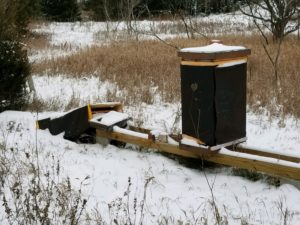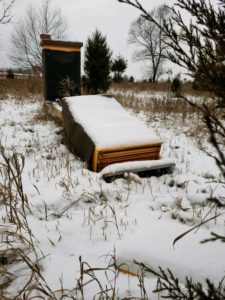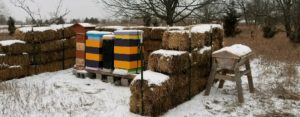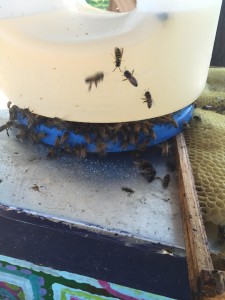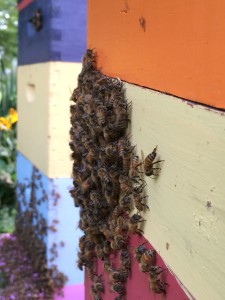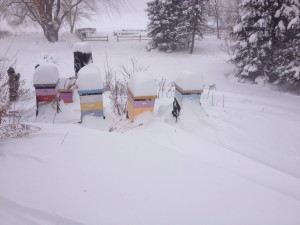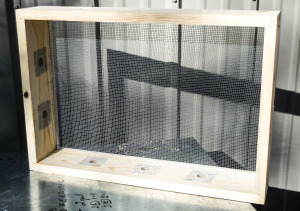Winter has finally arrived in Kalamazoo with a gusty debut! This is a good opportunity to check your hives and make sure they are secured for the next few months of our Michigan climate.
High winds and animals pose a significant risk to any hive, but especially any vertical style hive like Langstroth and Warre hives. This is doubly true for narrower profile hives like 8 frame hives and 5 frame nucs. If you haven’t already done so, strap them down or weight them with a 20-pound rock or block. Windbreaks and other wintering preparation provide additional protection, and it’s not too late to give your bees an edge by shielding them from excessive drafts.
The WMU apiary suffered from the strong winds this week, and some corrective measures have been taken.
Images © Todd Smith 2017.
Edit: Be sure to check out Rusty Burlew’s site for a lot of great wintering information.
Remember that beekeeping is a highly local endeavor — what works for someone ten miles away may not work for you.
